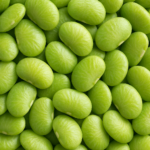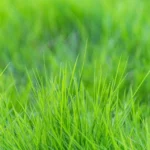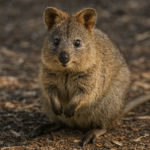
Pines are evergreen coniferous trees that belongs to the family Pinaceae.
Pines are best known as Christmas trees, and cones are often used in decorative purposes during the holiday season. Other than that, pines are cultivated in the gardens and parks because of their ornamental morphology.
There are about 125 species of pines.
Pines produce resin that flows from the injured bark. Unfortunately, resin is highly flammable and it facilitates spreading of the forest fire.
Pine trees grow primarily in the Northern Hemisphere. Several species of pine have been artificially introduced to select temperate and subtropical regions in the Southern Hemisphere.
Wood of pines is used in the manufacture of furniture, roofs, floors, railroad trails and parts of the ships.
They are found in such places as Europe, Africa, Asia, the United States and Canada.
Lifespan of pine depends on the species. They can survive from couple of hundred to couple of thousand years. Oldest known specimen lived until the age of 4800 years.
Pine trees flourish in temperate and subtropical climates.
They can be found growing in altitudes of up to 4,000 meters (13,000 feet).
They grow well in sandy or well-drained soil.
Fully grown trees require full sun and very little water to survive.
Nut of the Chinese white pine is mildly toxic. It produces metallic taste in the mouth. This unpleasant sensation vanishes after couple of days. Medical condition associated with consumption of the Chinese white pine is known as Pine Mouth Syndrome.
Pines are long-lived, and typically reach ages of 100–1,000 years, some even more.
The longest-lived species is the Great Basin bristlecone pine, Pinus longaeva. One individual of this species, dubbed “Methuselah” ,is one of the world’s oldest living organisms at around 4,800 years old. This tree can be found in the White Mountains of California. An older tree, (also bristlecone pine) was discovered in Inyo National Forest, it is over 5,000 years old.
20 different types of pines produce nuts that are used in human diet. They are often baked in the oven or fried in the pan before the consumption.
Size of the pine depends on the species. They can reach from 3 to 80 meters (10 to 260 feet) tall, with the majority of species reaching from 15 to 45 meters (50 to 150 feet) tall.
The smallest are Siberian dwarf pine and Potosi pinyon, and the tallest is a 81.79 meters (268.35 feet) tall.
Pollen from the male cones will be transported to the female cones with the help of wind. Female cones are green and sticky before fertilization. They change the color into brown and harden few years after fertilization, when they become ready to release seeds.
The bark of most pines is thick and scaly, but some species have thin, flaky bark.
Most pine trees produce lateral branches in large whorls running up a straight trunk. Many pines are uninodal, producing just one such whorl of branches each year, from buds at the tip of the year’s new shoot, but others are multinodal, producing two or more whorls of branches per year.
Despite the fact that seeds have low weight, it will be dispersed only 90 feet away from the mother plant.
Pines are monoecious plants, which mean that one plant produces individual male and female cones.
The spiral growth of branches, needles, and cone scales are arranged in Fibonacci number ratios (1, 1, 2, 3, 5, 8, 13, 21, 34, 55).
Pines have leaves shaped like needles that remain on the trees throughout the whole year (evergreen plants). Pine tree needles are 2.5 to 28 centimeters (1 to 11 inches) long.
Pines reproduce via cones, conically shaped structures that contain male and female sex organs.
Cones are a key element for pine trees. Both female and male cones appear on a tree. The male cones are typically 1–5 cm (0.4-2 in) long while the female cones are 3–60 cm (1.2-24 in) long. The female cones produce seeds, while the male cones drop pollen. The pollen is carried by gravity or wind to the female cones, fertilizing the seeds. The seeds are winged and dispersed by wind and animals who consume these seeds.
Pines have leaves shaped like needles that remain on the trees throughout the whole year (evergreen plants).
Pines produce resin that flows from the injured bark. Unfortunately, resin is highly flammable and it facilitates spreading of the forest fire.
Most pines have thick and scaly bark. A lot of branches arise from the same, spirally arranged points on the tree.
Pines are among the most commercially important tree species valued for their timber and wood pulp throughout the world.
Pine plantations are grown specially to harvest timber. Pine plantations can be harvested after 30 years, with some stands being allowed to grow up to 50 (as the wood value increases more quickly as the trees age).
The wood of pine trees is used in the manufacture of panelling, window frames, floors, roofing, furniture.
Pines are also commercially grown and harvested for Christmas trees.
Size of the pine depends on the species. They can reach from 10 to 245 feet in height. Most pines grow up to 147 feet. Crown can reach 30 feet in diameter.
Since Christmas trees first became popular in 16th century Germany and internationally in the 19th century, pines and other evergreens have been the top choice. Their branches are strong enough to hold ornaments, candles, and strings of lights and their fragrance is soothing to anyone who walks into a room where the tree is present.
Many pine species make attractive ornamental plantings for parks and larger gardens with a variety of dwarf cultivars being suitable for smaller spaces.
Pine trees play an important part of the beliefs and legends of many Native American and First Nations people. To many Native people, the pine tree is a symbol of wisdom and longevity. To others, its needles and sap are medicine that protects people from illnesses, witchcraft, and more.
Some species have large seeds, called pine nuts, that are harvested and sold for cooking and baking. Pine nuts are a major source of amino acids and proteins, which make them highly nutritious.
A tea made by steeping young, green pine needles in boiling water (known as “tallstrunt” in Sweden) is high in vitamins A and C.
The pine tree releases a strong pine scent when disturbed or overheated.
Frequently asked questions:
Is it illegal to pick up pine cones?
Whether or not picking up pine cones is illegal depends on where you find them. Here’s a breakdown:
Public Land: In many places, it’s illegal to remove anything natural from public land, including national parks, forests, or wildlife refuges. This often applies to pine cones.
Private Land: If you’re on private property, it depends on the landowner’s rules. It’s always best to ask permission before taking anything, including pine cones.
Your Own Property: You can generally pick up pine cones on your own property.
Here are some additional things to keep in mind:
Even if it’s legal to pick up pine cones, taking a large amount could disrupt the ecosystem. Pine cones are an important food source for some animals.
Some places may have restrictions on the amount of pine cones you can take.
In short, it’s best to be cautious and check the rules before picking up pine cones. If you’re unsure about a specific location, you can contact the park ranger or landowner for clarification.








